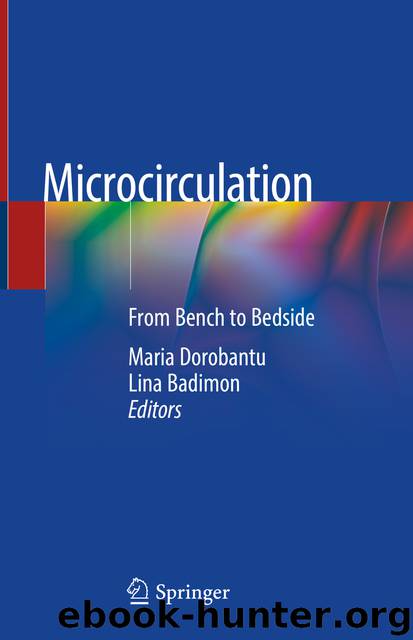Microcirculation by Unknown

Author:Unknown
Language: eng
Format: epub
ISBN: 9783030281991
Publisher: Springer International Publishing
Role of Acetylcholine Vasomotor Testing (for Protocols Please Refer to Chap. 3)
In one of the largest cohort of INOCA patients (1379 patients) in Europe with Ach testing [16], one third were positive with a microvascular pattern, one quarter were positive with epicardial pattern, another third were ambiguous and less than one eights were normal. However, acetylcholine testing may be interpreted in two different ways. It might be used as a tool for coronary spasm diagnosis (especially when variant angina is suspected) or to evaluate endothelial ( epicardial and microcirculatory) function in different clinical settings. When the diagnosis of coronary spasm is challenged there are certain thresholds used (>90% reduction in luminal diameter together with ECG changes and reproduction of symptoms) [6]. However, when endothelial dysfunction is tested [17] the threshold for a positive result is either a diameter reduction of >20% (for epicardial endothelial dysfunction) or a flow increase of <50% (for microcirculatory dysfunction). These are based on the fact that in coronary arteries with normal endothelial function acetylcholine infusion induces an increase in epicardial artery diameter and flow, and this finding are associated with good prognosis. Several outcome studies showed significant differences in parameters of endothelial function between patients with and without events during follow-up, especially for epicardial endothelial function, and these differences remained predictive even after adjusting for the presence of cardiovascular risk factors [18, 19]. Consequently, it is difficult to determine based on available prognostic data which is the significance of epicardial narrowing between 20% and 75% (90)% and this might be important especially in patients with inconclusive results (one third of cases in the study mentioned earlier). Moreover, the doses of acetylcholine might be a matter of debate. In previous prognostic trials testing for endothelial dysfunction [20, 21] the doses were generally 18 μg/min (1 mL/min from solution 10−4 M) much smaller than those used for coronary spasm testing trials [16] in (up to 200 μg in 3 min) and also from those recommended in the last consensus from Japanese Circulation Society guidelines ( doses up to 100 μg injected over 20 s) [22].
Download
This site does not store any files on its server. We only index and link to content provided by other sites. Please contact the content providers to delete copyright contents if any and email us, we'll remove relevant links or contents immediately.
| Administration & Medicine Economics | Allied Health Professions |
| Basic Sciences | Dentistry |
| History | Medical Informatics |
| Medicine | Nursing |
| Pharmacology | Psychology |
| Research | Veterinary Medicine |
Tuesdays with Morrie by Mitch Albom(4690)
Yoga Anatomy by Kaminoff Leslie(4306)
Science and Development of Muscle Hypertrophy by Brad Schoenfeld(4089)
Bodyweight Strength Training: 12 Weeks to Build Muscle and Burn Fat by Jay Cardiello(3913)
Introduction to Kinesiology by Shirl J. Hoffman(3725)
How Music Works by David Byrne(3187)
Sapiens and Homo Deus by Yuval Noah Harari(2987)
The Plant Paradox by Dr. Steven R. Gundry M.D(2547)
Churchill by Paul Johnson(2506)
Insomniac City by Bill Hayes(2497)
Coroner's Journal by Louis Cataldie(2432)
Hashimoto's Protocol by Izabella Wentz PharmD(2331)
The Chimp Paradox by Peters Dr Steve(2297)
The Universe Inside You by Brian Clegg(2097)
Don't Look Behind You by Lois Duncan(2080)
The Immune System Recovery Plan by Susan Blum(2027)
The Hot Zone by Richard Preston(1983)
Endure by Alex Hutchinson(1964)
Woman: An Intimate Geography by Natalie Angier(1882)
